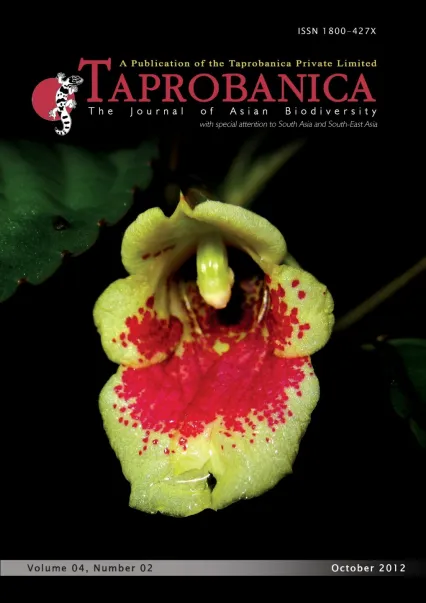

v4i2.70
Volume 4 | Number 2 | November 2012
Editorial
ISSN: 1800-427X (print)
eISSN: 1800-427X (online)
DOI:10.47605/tapro.v4i2.70
Published date: 14 November 2012
Pp. 60–64
EDITORIAL : Meet the Parasites: genetic approaches uncover new insights in parasitology
Ria R. Ghai & Colin A. Chapman*
*Section Editor: Taprobanica, the journal of Asian Biodiversity
With the continual refinement and development of new molecular approaches, the last few years have witnessed a dramatic increase in the number of parasitological studies using genetics to answer ecological questions. Particularly, the advent of full genome sequencing holds promise to "decode all life", offering new potential to not only understand, but cure diseases. With the over-abundance of information and the comparable rapidity that these approaches can provide data, ecologists must be more careful than ever to select tools that suit their objectives and provide the resolution to their data that best fits their question, not simply the most attractive option. In this vein, Weinberg (2010) acknowledges that the molecular revolution has allowed a new mentality of “discover now and explain later” to invade research, and this has placed hypothesis-driven research under threat. However, regardless of potential setbacks that molecular approaches have introduced into basic research, their contributions to the progression of science are unquestionably more numerous and far reaching. Here, we discuss six areas where molecular approaches are useful to ecological parasitologists.
eISSN: 1800-427X (online)
DOI:10.47605/tapro.v4i2.70
Published date: 14 November 2012
Pp. 60–64
EDITORIAL : Meet the Parasites: genetic approaches uncover new insights in parasitology
Ria R. Ghai & Colin A. Chapman*
*Section Editor: Taprobanica, the journal of Asian Biodiversity
With the continual refinement and development of new molecular approaches, the last few years have witnessed a dramatic increase in the number of parasitological studies using genetics to answer ecological questions. Particularly, the advent of full genome sequencing holds promise to "decode all life", offering new potential to not only understand, but cure diseases. With the over-abundance of information and the comparable rapidity that these approaches can provide data, ecologists must be more careful than ever to select tools that suit their objectives and provide the resolution to their data that best fits their question, not simply the most attractive option. In this vein, Weinberg (2010) acknowledges that the molecular revolution has allowed a new mentality of “discover now and explain later” to invade research, and this has placed hypothesis-driven research under threat. However, regardless of potential setbacks that molecular approaches have introduced into basic research, their contributions to the progression of science are unquestionably more numerous and far reaching. Here, we discuss six areas where molecular approaches are useful to ecological parasitologists.
- List of Articles & Contents





